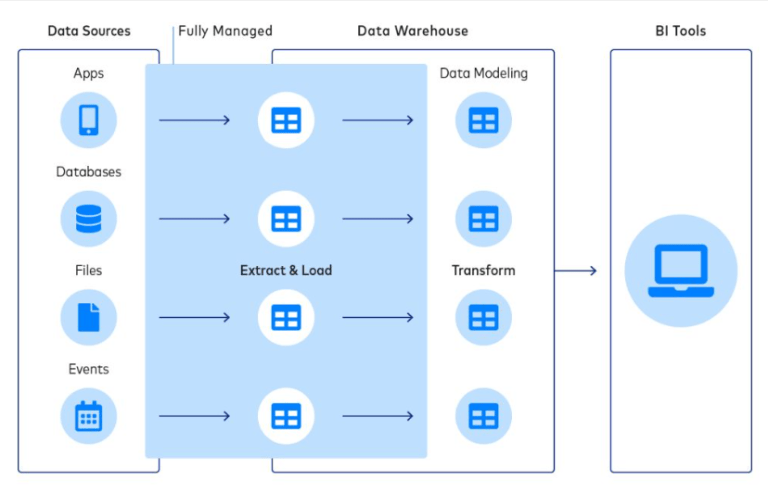How a critical, global industry comes back can tell us a lot about the future.

At long last, the airlines industry is finally coming back. Now the issue is: what will this business look like? Finding new ways to utilize and drive insights from data will play a big role in reinventing U.S. air travel.
getty
The airlines industry was one of the hardest hit by the global pandemic, and few are likely to be more changed as a result—particularly when it comes to how it uses data and technology to renew itself.
In April 2019, some 70 million passengers were screened at U.S. airports alone. A year later, in the first full month of the COVID-19 shutdown, that number fell 95% to 3.2 million. Obviously, this was like nothing I had observed during my 16 years in senior positions at three major airlines. Rather, it was a collapse with few parallels in economic history.
At long last, this industry is finally coming back. In the first 20 days of April 2021 alone, there were 28 million passenger screenings in the United States, more than five times the year-earlier count for the entire month. Now the issue is: what will this business look like? How will it figure out what consumers and businesses expect, in terms of pricing, service, and safety? Can new efficiencies be created to sustain the industry through a long period of recovery? What are the new sources of dramatic innovation for a business that’s historically conservative in its practices?
From what I’ve seen and heard recently, there are a few trends emerging around how airlines are looking to tackle this new future:
- Data insights are essential, and they are coming from more places than ever, such as flight and aircraft logs, ticketing information, customer service transactions, weather forecasts, events and conferences, social media, and much more.
- Third-party data gives even stronger clues about what to do next.
- Personal customer experiences take priority.
- New values like sustainability may guide some operations.
- Successful organizations aren’t afraid of complexity, and will learn to manage it.
Related: Malaysia Airlines: Taking off with a machine-learning-powered customer chatbot
How data analytics and machine learning can help the travel industry unlock new value
How the travel industry recovers is a question that matters to more than just passengers, industry employees, or aircraft manufacturers. In 2018, the International Air Transport Association stated that the global transport sector supports 65.5 million jobs, and $2.7 trillion in economic activity. That’s hotels, rental cars, tourism, conferences, and the ability to conduct business deals in person, just to name a few examples.
Almost always, change involves figuring out better ways to use data and drive insights from a vast array of real-time signals.
I’ve been at Google Cloud for about one year, speaking on an almost daily basis with airlines, aircraft manufacturers, and other members of the industry. To a remarkable degree, most are looking for ways to change. Almost always, that involves figuring out better ways to use data and drive insights from a vast array of real-time signals.
As a cloud computing company, we can help with industry-leading analytics and machine learning tools like BigQuery, Google’s cloud data warehouse that crunches petabytes of information in real time. This can help with better management of day-to-day operations and consumption of resources like fuel, based on better predictions of weather delays or runway congestion. Similar data can also be wielded to improve predictions of flight times, a critical element of customer satisfaction.
Related: AirAsia goes “data first” to serve customers, refine pricing, and grow revenue
Many organizations are now able to use data in new ways to find signals and clues on how their business is operating and how customers are engaging. All of this helps in allocating resources. This is a particularly interesting trend: After the tumult of 2020, there are so many new elements to consider—like how people feel about airplane air quality—that older data amassed over the years may be less valuable than market information from the past month or even the past week. Data freshness is now an important aspect to consider.
Indeed, understanding the context of the decisions indicated by data will be the key to unlocking incremental value for the industry, and Google Cloud’s AI and ML technologies can help derive the contexts in a timeframe that enables real-time decision-making.
Related: Learn how Lufthansa Group and Google Cloud are working together to use AI to streamline operations and solve airlines’ biggest challenges
Masses of global data, serving individual needs
When we bring together these two elements—better using existing data and better incorporating new third-party information—we see an industry that is modernizing in the service of increasingly personalized situations. On the level of data ingestion, this means wielding knowledge of things like whole fleet routings, national and global weather, and changing markets.
In turn, the analytic outputs will often be deployed in more specific situations than ever before, tailored for example to one particular flight within a network of data-informed flights and schedules.
Some of my most exciting recent conversations have centered on ways airlines can use data and AI to improve their sustainability efforts. Airlines can suffer disruptions due to many factors, including weather. AI-scaled real-time decisions, however, can help airlines recover operations, reducing the impact of disruptions to customers and their larger ecosystems, including airports and ground transportation—a consequence of which is reduced consumption of fuel, electricity, water, and food. AI can also help optimize the path of an aircraft from the gate to the runway to optimize fuel burn during taxiing. And, according to this Forbes article, fuel accounts for 25-30% of total industry expenses, so cutting even a couple of percentage points could not only save the industry billions in cost, but also help airlines achieve their sustainability goals.
This combination of high complexity and deep industry knowledge and insight was behind Google Cloud’s newly formed 10-year partnership with Sabre, a software and technology company that powers the travel industry. Sabre and Google are working together to help digitally transform the traveler’s experience, and reimagine the future of travel. Look for our first developments soon.
When we bring together these two elements—better using existing data and better incorporating new third-party information—we see an industry that is modernizing in the service of increasingly personalized situations.
This approach of matching very large datasets with more diverse sources in the service of more targeted and personalized outcomes seems like an encounter with tremendous complexity. That is not to say it should be daunting and unwelcome. Complexity is almost always measured against a system’s current standards and habits: as things change, and more complexity is taken on, its management becomes an operational new standard, with processes that simplify making decisions based on petabytes of data.
It wouldn’t be the first time for such a phenomenon. Travel has long been at the forefront of managing increased complexity, and driving innovation as a result. If we look back 138 years to the early days of transcontinental rail travel, moving from the speed of horses to the speed of trains added the complexity of managing different clocks in each town. This resulted in the creation of standard time zones. International freight delivery became possible once computing became cheap enough to manage complex logistics. More efficient route mapping, cross-industry loyalty programs, and in-flight digital entertainment systems are just a few more of the ways that transport has embraced complexity, leading to new standards of what consumers expect.
In that sense, travel isn’t just in its own period of recovery and renewal in a new system. It is a leader in a new era of more accessible computation, faster, more high-touch decision-making, and greater awareness of the operation, customer, and market needs.
We can’t predict the future, but we can be ready for it. Register for the virtual Data Cloud Summit to hear how leading companies are adapting to change and using Google Cloud technologies to build their data clouds and transform their organizations.







